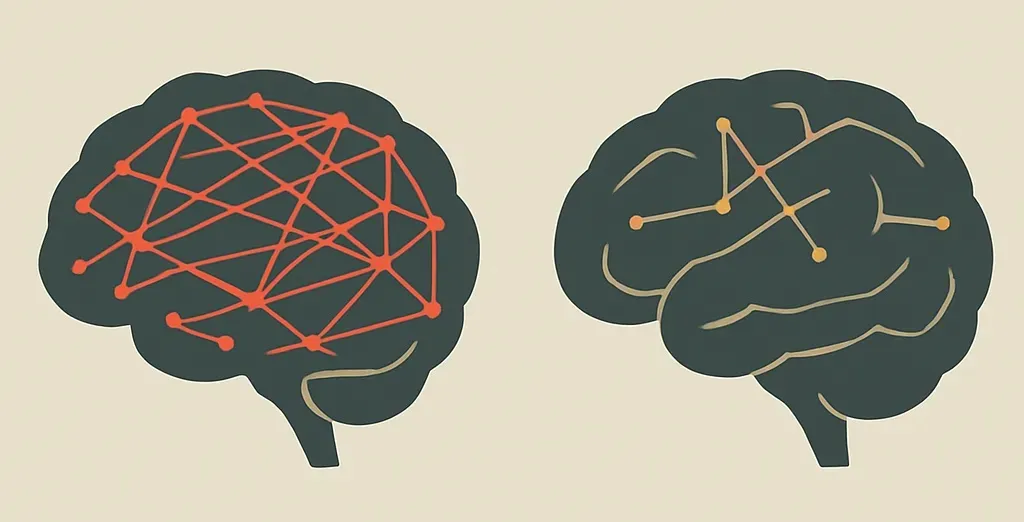When Neuroscience Maps Our Brains But Not Our Lives
 A new study in Scientific Reports applies a network science technique called “contrast subgraphs” to resting-state fMRI data from the ABIDE database.
A new study in Scientific Reports applies a network science technique called “contrast subgraphs” to resting-state fMRI data from the ABIDE database.
The researchers’ goal? To better capture patterns of both hyperconnectivity and hypoconnectivity in autistic brains — something previous studies have struggled to unify.
They’re asking: is autistic brain connectivity increased? Decreased? Both?
Their answer: yes, both — depending on where you look.
What They Found
- In autistic children, brain regions linked to vision and local processing (like the occipital cortex and precuneus) show increased connectivity.
- Regions involved in language and higher-order planning (like the superior frontal gyrus and temporal lobes) show decreased connectivity.
- In autistic adolescents, they observed changes in the cerebellum, particularly in areas tied to movement and timing — some more connected, some less.
It’s a tangle of signals, but the message is clear:
There is no one way to be autistic — not even in the brain.
What’s Missing — and Always Missing
This study is technically impressive. But like so many others, it speaks in the language of deviation, not difference.
It shows us where autistic brains “don’t match the norm,” but doesn’t ask what the norm is for, or who defined it.
We get maps — but no meaning.
Activity charts — but no curiosity about what it’s like to live in this brain.
There’s no engagement with autistic experience, no exploration of how sensory intensity or fragmented attention might serve us — protect us — orient us.
No asking what these so-called “disruptions” might be doing for us, not just to us.
Why AAB Pays Attention Anyway
Because we don’t ignore neuroscience — we claim it back.
Not to explain ourselves to outsiders, but to challenge how the brain is framed in the first place.
This study hints at something important:
Autistic brains are organized differently — not chaotically. Not brokenly.
Differently.
If researchers want to know what that difference means, the next step isn’t better algorithms.
It’s better listening.
To us.